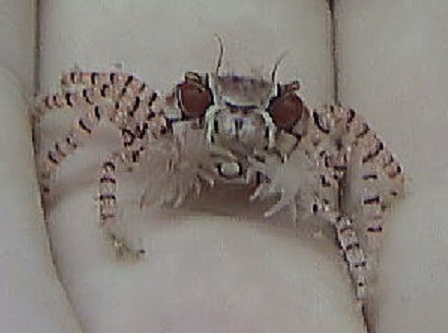
Why do crabs use sea anemones as weapons? The crab, known as the pom-pom crab, uses sea anemones to defend against predators and to sting its prey.
There are three types of symbiotic relationships in the world. The first is mutualism. In a mutualistic relationship, both parties receive a benefit that they would not be able to get if they were on their own. African Oxpeckers are a good example of this. They are birds that ride on larger animals, such as oxen and elephants. The birds eat the ticks that live on the skin of the larger animals. The birds get a free source of food, and the larger animals are freed of ticks. It is mutually beneficial. The second type of symbiotic relationship is commensalism. In a communalistic relationship, one of the partners gets a benefit while the other is unaffected. An example of this is birds that live near grazing animals and eat insects that are turned up when the animals eat grass. The birds get food, but the grazing animals are unaffected. And then there are parasitic relationships. This is where one species lives on another, benefiting at the extent of the host. Fleas on a dog are a good example. The fleas get a source of blood and somewhere to eat, while the dogs get bitten. Pom-pom crabs and sea anemones appear to be a mutualistic relationship.
The scientific name for these crabs is Lybia edmondsoni. They are fairly small, with a body that is only about 13 mm across. They live in the seas around Hawaii to a depth of about 20 m. They have evolved the defense of using a sea anemone because they don’t have the thick shell that most crabs have. They can’t defend themselves well, and they have difficulty killing and eating prey as well. They like to eat shrimp and small squid, which can be tricky to kill.
They use an anemone called Triactis producta to fight and defend themselves with. This anemone is quite small and has a stalk of about 1 cm with long tentacles sprouting out from the top. These tentacles are where the venom is, similar to a jellyfish. For its size, Triactis producta is a very venomous sea anemone. They cause a lot of injuries to tourists, and the burns can last for weeks. This sea anemone also has non-toxic tentacles. These tentacles are covered in algae that photosynthesize, and the anemone can eat the sugars that the algae produce.
The venom in the sea anemone is also dangerous to the pom-pom crab, so they are careful when they pick it up. They have a claw that is different from most crabs because it doesn’t have a very hard shell and is more flexible. They hold the anemone by the stalk using these claws, and they have spines that grow out of their forelegs that they use to hold the anemone steady. Then they brandish them like pom-poms. The crabs use the anemone pom-poms in two ways. They use them to stun food, and they use them to fight off predators, which include other crabs. When they fight other crabs, they both dance around each other and very rarely use the anemone. It might be that the anemone venom is so dangerous to them that it is more for show.
The advantages that the crab gets out of this relationship are easy to see. The anemone is a form of defense and is a way for the crab to get food. It is less clear what the anemone gets out of this relationship. It seems a little one-sided. Once the crab has used the anemone to stun food, the crab takes the food away from the anemone, so the relationship does not give a source of food. Also, if the crab loses one of the anemones, it will tear the remaining anemone in half, with each half growing into a new anemone. It was thought that the anemone does get some food out of this relationship, but studies have shown that the crabs purposefully limit the anemone’s access to food so that they don’t grow too big and become difficult to handle. It appears that the anemone only gets access to more oxygen and transportation, which allows them to spread. Sea anemone could probably live without the crab, but the relationship is advantageous. The crabs, on the other hand, cannot live without the anemone. They have adapted so much that they cannot use their claws to find food if they don’t have any anemone. And this is what I learned today.
Sources
https://en.wikipedia.org/wiki/Lybia_edmondsoni
https://en.wikipedia.org/wiki/Triactis
https://pmc.ncbi.nlm.nih.gov/articles/PMC5289105
https://en.wikipedia.org/wiki/Obligate_mutualism
https://www.tabledebates.org/glossary/symbiotic-relationship
https://www.lembehresort.com/blogs/sea-anemones-fact
Image By User:Dawson – wikimedia, CC BY-SA 2.5, https://commons.wikimedia.org/w/index.php?curid=28952403
